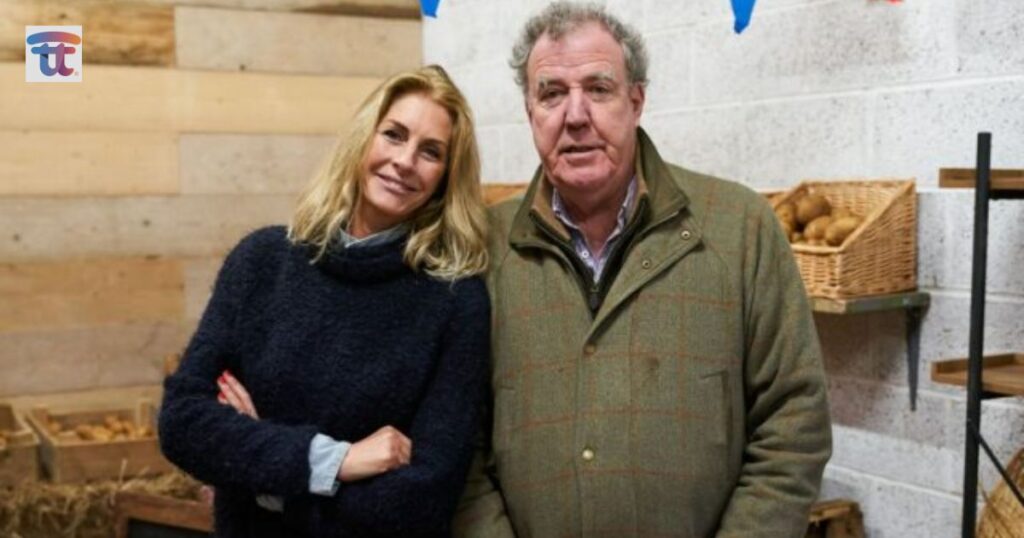Elizabeth Mary Wilhelmina Bentinck represents a new generation of European nobility, seamlessly blending her noble heritage with a forward-thinking vision for sustainable development and social equality.
As a figure rooted in both Dutch and British aristocracy, she embodies the values of tradition, innovation, and responsibility. This comprehensive article delves into her biography, family legacy, contributions to society, and her aspirations for the future.
Quick Bio
| Attribute | Details |
| Full Name | Elizabeth Mary Wilhelmina Bentinck |
| Date of Birth | October 22, 1998 |
| Noble Lineage | Dutch-British noble heritage |
| Languages Spoken | Fluent in multiple European languages |
| Residences | Netherlands and the United Kingdom |
| Areas of Focus | Education, environmental conservation, women’s rights |
| Philanthropic Focus | Addressing global challenges through innovative leadership |
| Core Values | Heritage, progress, impactful philanthropy |
Elizabeth Mary Wilhelmina Bentinck stands as a beacon of modern aristocracy. Born on October 22, 1998, she symbolizes the continuation of a noble lineage deeply embedded in European history. With a rich Dutch-British noble legacy, her life is a reflection of both heritage and progress.
Fluent in multiple European languages, she resides between the Netherlands and the United Kingdom, where she works tirelessly to address global challenges.
Her areas of focus—education, environmental conservation, and women’s rights—highlight her innovative philanthropic leadership and dedication to creating a meaningful impact.
Who is Elizabeth Mary Wilhelmina Bentinck?

Elizabeth Mary Wilhelmina Bentinck is a modern aristocrat reshaping the image of 21st-century aristocracy.
Unlike traditional notions of nobility rooted solely in privilege, she leverages her platform to advocate for sustainable estate management, environmental conservation efforts, and education accessibility programs.
Her life reflects a commitment to carrying forward the Bentinck family heritage while redefining what it means to be a noble in the modern age.
Through her work, Elizabeth represents an evolution in European nobility—focusing not just on preserving family traditions but also on addressing pressing global issues.
By integrating sustainability into her family estates and promoting women’s empowerment initiatives, she is creating a lasting legacy that resonates beyond aristocratic circles.
A New Beginning: The Birth of Elizabeth Mary Wilhelmina Bentinck
Born on October 22, 1998, Elizabeth Mary Wilhelmina Bentinck entered a world steeped in history and tradition. Her birth marked the continuation of the prestigious Bentinck family, whose influence has spanned centuries in both Dutch and British society.
The choice of her name reflects her family’s ties to royalty and nobility, with “Elizabeth” and “Wilhelmina” symbolizing connections to the British and Dutch monarchies, respectively.
Growing up under the guidance of her father, Steven-Carel Johannes Bentinck, Elizabeth was instilled with a strong sense of duty and purpose.
Her early years were spent learning about her family’s role in European history and the responsibilities that come with such a legacy.
From a young age, she showed an innate understanding of the importance of balancing tradition with modernity.
A Noble Lineage: The History of the Bentinck Family
The Bentinck family’s story begins in the Netherlands during the 17th century when they rose to prominence as one of Europe’s most influential noble families.
Among their notable ancestors was William Bentinck, who played a critical role in the Glorious Revolution of 1688, helping to secure the throne for William III of England.
This pivotal moment cemented the family’s status as a bridge between Dutch and British political spheres.
Throughout history, the Bentincks have been known for their contributions to politics, culture, and society.
Their estates have served as centers of influence, hosting intellectuals, artists, and leaders who shaped the course of European history.
Today, Elizabeth Mary Wilhelmina Bentinck continues this tradition by ensuring the preservation of her family’s heritage while adapting it to the demands of the modern era.
Elizabeth’s Education and Early Life

Elizabeth Mary Wilhelmina Bentinck’s upbringing was a careful blend of tradition and modernity. She received a rigorous education that emphasized international relations, environmental science, and estate management.
Fluent in multiple European languages, she was also exposed to the cultural and historical significance of her family’s lineage.
Her early life was shaped by her father’s influence, who ensured that she understood the responsibilities associated with their noble heritage.
Elizabeth also pursued academic opportunities that allowed her to explore contemporary issues such as sustainability and women’s empowerment. This dual focus on tradition and innovation laid the foundation for her future endeavors.
As a young aristocrat, Elizabeth’s ability to connect with people across cultures and her deep understanding of global challenges set her apart from her peers.
She embodies the qualities of a modern European noble, using her education and experiences to make a meaningful difference.
Philanthropic Efforts and Social Contributions
Elizabeth Mary Wilhelmina Bentinck is deeply committed to philanthropy, focusing on three primary areas: education, environmental conservation, and women’s rights.
Her approach to these issues reflects her innovative philanthropic leadership and dedication to social responsibility.
In the field of education, Elizabeth has championed programs that increase accessibility for underserved communities. By leveraging her family’s resources and influence, she has supported initiatives that provide scholarships, build schools, and promote lifelong learning opportunities.
These efforts have had a profound impact on rural communities in both the Netherlands and the United Kingdom.
Elizabeth’s environmental conservation efforts are equally noteworthy. She has implemented sustainable estate management practices on her family’s properties, including renewable energy projects, eco-friendly farming techniques, and wildlife preservation programs.
Her commitment to sustainability extends beyond her estates, as she actively collaborates with organizations dedicated to combating climate change.
Women’s empowerment is another cornerstone of Elizabeth’s philanthropy. She has launched mentorship programs and initiatives aimed at breaking barriers for women in leadership roles.
Her work in this area highlights her belief in the importance of equality and inclusivity in modern society.
Family Life and Personal Relationships
Elizabeth shares a close relationship with her father, Steven-Carel Johannes Bentinck, who has been a guiding force in her life.
Together, they have worked to modernize the Bentinck family’s approach to nobility while preserving its rich heritage.
Balancing public and private life is a skill that Elizabeth has mastered, allowing her to remain approachable and relatable while fulfilling her responsibilities as a noble.
Her personal relationships reflect her values of loyalty, humility, and dedication to service.
Carrying on the Bentinck Legacy

Elizabeth Mary Wilhelmina Bentinck has taken significant steps to carry forward her family’s legacy in a way that aligns with contemporary values.
She has introduced sustainable practices to the management of family estates, ensuring that they remain viable for future generations.
One of her most notable achievements is the digitization of historical archives, making centuries-old documents accessible to researchers and the public.
This initiative underscores her commitment to preserving cultural heritage while embracing modern technology.
Through her efforts, Elizabeth is setting a standard for 21st-century aristocracy—one that values tradition but prioritizes progress and social impact.
A Legacy of Duty and Service
Elizabeth Mary Wilhelmina Bentinck embodies the concept of noblesse oblige, reinterpreted for the modern era.
Her dedication to education accessibility programs, environmental conservation efforts, and women’s empowerment initiatives has earned her recognition both within and beyond aristocratic circles.
Her work serves as a reminder that nobility is not merely a privilege but a responsibility to serve society. Elizabeth’s achievements reflect her commitment to redefining aristocratic duty in a way that resonates with contemporary audiences.
Future Prospects
Looking ahead, Elizabeth has ambitious plans to expand her philanthropic efforts on a global scale. She envisions a future where education, sustainability, and equality are accessible to all, regardless of geographic or economic barriers.
Her goals include developing international partnerships, integrating technology with heritage preservation, and creating sustainable tourism models for historical estates. These initiatives highlight her forward-thinking approach and her ability to inspire change on a global level.
Conclusion
Elizabeth Mary Wilhelmina Bentinck is more than a noble—she is a visionary leader reshaping the role of aristocracy in the 21st century.
Through her innovative philanthropic leadership and dedication to social responsibility, she is leaving an indelible mark on history.
As she continues to build upon her family’s legacy, Elizabeth serves as a shining example of how tradition and progress can coexist harmoniously.
In a world seeking solutions to complex challenges, Elizabeth Mary Wilhelmina Bentinck stands as a beacon of hope, proving that even the most historic legacies can evolve to meet the needs of the present and future.
Frequently Asked Questions (FAQs)
Who is Elizabeth Mary Wilhelmina Bentinck?
Elizabeth Mary Wilhelmina Bentinck is a Dutch-British aristocrat known for her modern approach to nobility. She focuses on sustainable estate management, environmental conservation, and social causes such as education accessibility and women’s empowerment.
What is Elizabeth Mary Wilhelmina Bentinck’s full name?
Her full name is Elizabeth Mary Wilhelmina Bentinck, reflecting her family’s Dutch and British noble heritage.
When and where was Elizabeth Mary Wilhelmina Bentinck born?
She was born on October 22, 1998, into a family with a long-standing history of nobility in both the Netherlands and the United Kingdom.
What is the history of the Bentinck family?
The Bentinck family rose to prominence in the Netherlands during the 17th century. They played a significant role in European politics, especially during the Glorious Revolution of 1688, when William Bentinck supported William III of England.
What are Elizabeth’s main areas of focus in her philanthropic work?
Her primary focus areas include education accessibility programs, environmental conservation efforts, and initiatives promoting women’s empowerment.
How does Elizabeth manage her family estates?
Elizabeth employs sustainable estate management practices, including renewable energy projects, eco-friendly farming methods, and the preservation of historical buildings and wildlife habitats.
What makes Elizabeth Mary Wilhelmina Bentinck unique as a modern aristocrat?
She blends her noble heritage with contemporary values by addressing global challenges like climate change, gender equality, and education. Her ability to modernize her family’s legacy while maintaining traditions sets her apart.
What languages does Elizabeth speak?
Elizabeth is fluent in multiple European languages, which allows her to connect with diverse communities and engage in international initiatives.
What is her contribution to environmental conservation?
Elizabeth has implemented eco-friendly practices on her estates, supported reforestation projects, and collaborated with organizations to promote sustainable development and climate action.
How does she support women’s empowerment?
Elizabeth has launched mentorship programs, advocated for equal opportunities for women, and supported initiatives that empower women to take on leadership roles in various fields.
What is Elizabeth’s vision for the future of the Bentinck legacy?
Her vision includes expanding educational initiatives, digitizing historical archives for public access, and integrating technology with heritage preservation to make the family’s legacy more accessible and sustainable.
How does Elizabeth balance tradition with innovation?
By respecting her family’s noble heritage while embracing modern practices, Elizabeth bridges the gap between the past and the present. She combines traditional values with innovative solutions to address contemporary global challenges.








